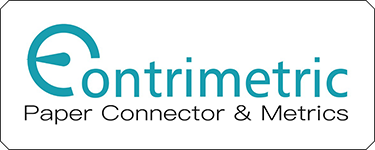Subsurface Evaluation: A Case Study at Universiti Pertahanan Nasional Malaysia, Malaysia
DOI:
https://doi.org/10.70028/sgm.v1i1.3Keywords:
Subsurface, Seismic Refraction, Resistivity, Boreholes, ExcavationAbstract
Accurate subsurface information is essential for determining rock and soil layers for excavation works. This paper presents a subsurface evaluation (rock and soil) through the correlation of seismic refraction and 2-D resistivity values in a weathered sedimentary rock area. Borehole log data were also used to validate the subsurface data obtained from both methods. The study site was located at a construction site within Universiti Pertahanan Nasional Malaysia, Kuala Lumpur. The subsurface profile was produced by integrating data from seismic refraction, the 2-D resistivity method, and borehole logs to provide a more accurate depiction of the subsurface, particularly the bedrock profile.
Downloads
References
P. Kamaraj, C. Sabarathinam, M. Haji, P. Choudhury, A.I. Abdelpahman, and M. Missionnaire, “An integrated approach to evaluate the status of the coastal aquifer near the mouth of Coleroon River, Tamil Nadu” Groundwater Contamination in Coastal Aquifers, Assessment and Management, Elsevier, pp. 105-118, 2022. doi: http://dx.doi.org/10.1016/B978-0-12-824387-9.00001-3
J.S. Kayode, M.H. Arifin, and M. Nawawi, “Characterization of a proposed quarry site using multi-electrode electrical resistivity tomography” Sains Malaysiana, vol. 48(5), pp. 945–963, 2019. doi: http://dx.doi.org/10.17576/jsm-2019-4805-03
J.S. Kayode, M.H. Arifin, M.B.I. Basori, and M.N.M. Nawawi, “Gold prospecting mapping in the peninsular Malaysia gold belts” Pure and Applied Geophysics, vol. 179, pp. 3295–3328 179, 2022. doi: http://dx.doi.org/10.1007/s00024-022-03121-w
Q. Cheng, M. Tao, X. Chen, and A. Binley, “Evaluation of electrical resistivity tomography (ERT) for mapping the soil–rock interface in karstic environments” Environ. Earth Sci., vol. 78 (15), pp. 1–14, 2019. doi: http://dx.doi.org/10.1007/s12665-019-8440-8
S. Das, and D. Chakraborty, “Effect of soil and rock interface friction on the bearing capacity of strip footing placed on soil overlying Hoek-Brown rock mass” Int. J. Geomech, vol. 22 (1), 04021257, 2022. doi: http://dx.doi.org/10.1061/(ASCE)GM.1943-5622.0002225
A.O. Fajana, “Groundwater aquifer potential using electrical resistivity method and porosity calculation: a case study” NRIAG J. Astron. Geophys., vol. 9, pp. 168-175, 2020. doi: http://dx.doi.org/10.1080/20909977.2020.1728955
N.D. Athens and J.K. Caers, “A Monte Carlo-based framework for assessing the value of information and development risk in geothermal exploration” Appl. Energy, vol. 256, December 2019. doi: http://dx.doi.org/10.1016/j.apenergy.2019.113932
M.B. Abdulla, R.L. Sousa, H. Einstein, and S. Awadalla, “Optimized multivariate Gaussians for probabilistic subsurface characterization. Georisk, vol. 13 (4), pp. 303–312, 2019. doi: http://dx.doi.org/10.1080/17499518.2019.1673441
B. Panda, C. Sabarathinam, G. Nagappan, T. Rajendiran, and P. Kamaraj, “Multiple thematic spatial integration technique to identify the groundwater recharge potential zones—a case study along the Courtallam region, Tamil Nadu, India” Arab. J. Geosci., vol. 13, pp. 1-16, 2020. doi: http://dx.doi.org/10.1007/s12517-020-06223-8
M. Joshi, A. Gond, P.R. Prasobh, S. Rajappan, B.P. Rao, and V. Nandakumar, “Significance and limit of electrical resistivity survey for detection sub surface cavity: a case study from, Southern Western Ghats, India” Basics Comput. Geophys. Elsevier, pp. 81-93, 2021. doi: http://dx.doi.org/10.1016/B978-0-12-820513-6.00004-7
P. Kamaraj, M. Jothimani, B. Panda, and C. Sabarathinam, “Mapping of groundwater potential zones by integrating remote sensing, geophysics, GIS, and AHP in a hard rock terrain” Urban Clim., vol. 51, September 2023. 101610. doi: http://dx.doi.org/10.1016/j.uclim.2023.101610
E.T. Mohamad, M.N.A. Alel, and N.F. Masdi, “Correlation between seismic refraction and borehole data for subsurface evaluation” Jurnal Teknologi, vol. 76, no. (2) 2015. doi: http://dx.doi.org/10.11113/jt.v76.5427
E.T. Muhammad, K. Anuar, and K. Ibrahim, “Challenges of ripping works in weathered sedimentary area” In: Proc 3rd Int Conf Geotech Eng, Semarang, Indonesia, pp 1–13, 2005.
M. Liang, E. T. Mohamad, I. Komoo, and M. Chau-Khun, “Performance evaluation of existing surface excavation assessment methods on weathered sedimentary rock” Bulletin Of Engineering Geology And Environment, vol. 76, pp. 205–218, 2015. doi: http://dx.doi.org/10.1007/s10064-015-0771-4
E.T. Mohamad, K.A. Kassim, and I. Komoo, “An Overview of Existing Rock Excavatability Assessment Techniques” Jurnal Teknologi, 17(2), 2015.
W.M. Telford, and R.F. Sherif, Applied Geophysics. Cambridge University Press, UK, 1984.
J.M. Weaver, “Geological factors significant in the assessment of rippability” Civ Eng S Afr., vol. 17, pp. 313-316, 1975.
Caterpillar Performance Handbook of Ripping, 32th Ed Caterpillar Tractor Company Preoria Illinios P. 32, 2001.
E.T. Mohamad, M.N.A. Alel, and N.F. Masdi, “Correlation between seismic refraction and borehole data for subsurface evaluation” Jurnal Teknologi, vol. 76, no. 2, 2015. doi: http://dx.doi.org/10.11113/jt.v76.5427
Downloads
Published
Issue
Section
License
Copyright (c) 2024 Noor Latifah Mohd Nasir, Dayang Zulaika Abang Hasbollah, Mohd Firdaus Md Dan @ Azlan, Hafi Munirwan (Author)

This work is licensed under a Creative Commons Attribution-NonCommercial 4.0 International License.













